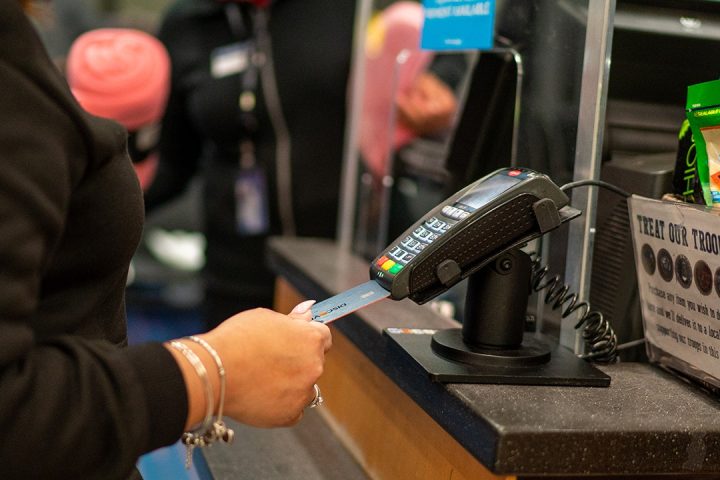Got a question about taxes or investing? You can write to me at [email protected].
Dear Marketwatch,
Who do I contact to find our 2022 tax refund that we directed to go into an I-bond on our tax return? Because amounts under $50 are not accepted in I-bonds, we received a deposit into our bank account for $20-plus dollars in April 2023.
The remaining $4,300 was to go into U.S. Series I Savings Bond per our instructions on IRS Form 8888, which was included in our tax return.
Given that we never saw the $4,300, we assumed that it went directly into our I-bond account. However, we can’t locate it in our I-bond accounts. We’ve contacted the Treasury Department but haven’t received a response. What should our next step be?
D.S.
Dear D.S.,
It’s time to start making some phone calls, and it might not be easy. The main entity you have to deal with to find your lost I-bonds is the Internal Revenue Service, since it was supposed to deliver paper I-bond certificates to you as your refund. It’s notoriously difficult to get a human customer-service agent on the phone who can help you at the understaffed IRS, but it’s not impossible.
If you were talking about a newly filed tax return for 2023, I’d have advised instead that you wait a little bit. The filing season just opened at the end of January, and anything that has to be issued physically takes longer than electronic deposits. So it would be entirely within the realm of possibility to get money in your bank account for the excess amount before a package arrives in the mail. The IRS advises that you give it up to three weeks before you start making inquiries about delayed refunds and check instead on their web-based Where’s My Refund tool.
But you’re way past that limit for your 2022 refund, so it’s time to start asking questions. The first thing to understand is that when you opt to get all or part of your federal tax refund in the form of I-bonds, these will be issued as paper certificates that will arrive in the mail; they do not go into your TreasuryDirect.gov account. Refund I-bonds are issued in increments of $50, and you can ask for up to $5,000 of a refund to be applied per tax return, but you may get multiple $100 certificates or a mix of denominations. Sometimes they arrive all at once, sometimes they come in multiple bundles.
“‘I have never heard of anyone losing these in the mail.’”
“If it was for a 2022 return, there is a problem. I have never heard of anyone losing these in the mail,” says Dave Enna, an I-bond expert who runs the website Tipswatch.com.
Check the status of your refund online or call the IRS Refund hotline (800-829-1954) or the main customer-service number (800-829-1040) and see if they can tell you something. It will take you a bit to get through the electronic menu, which branches out in many directions before you get to a live person. Stick with it. You’ll have to input the main Social Security number of the tax filing and walk through the steps, and you may have to call back several times if you hit dead ends. Think of it like a video game where you learn what obstacles to avoid to clear each level, even if it takes you several lives to do it.
If customer service can’t help you directly, you may have to file more forms, like IRS Form 3911, to initiate a trace of your lost refund. This is especially so if your return is married filing jointly, because the IRS notes that it can’t do an electronic refund trace on these. You can mail or fax the form to the appropriate location for your address, and sit back and enjoy the efficiency of paper-filing IRS forms.
There’s also a Treasury form to replace lost I-bonds (FS Form 1048), but this asks for purchase date and serial-number information, which you won’t have because you never received the bonds from the government. If the IRS is able to tell you that they did issue the I-bonds and can give you the information, then the IRS says to redirect your questions to the Treasury Retail Securities Services line at 844-284-2676.
You’re due the funds, so they should find you eventually. Once you have your paper certificates safely in hand, be sure to note that identifying information, should you lose them again. You’ll also want it on hand for proof of ownership should you decide to mail the certificates to TreasuryDirect.gov to be added to your electronic account or to cash them out at a financial institution.
After going through this experience, you may wonder if opting for your tax refund in the form of I-bonds is worth it. It’s a good question. It’s a hassle, but otherwise, you can only buy $10,000 worth of I-bonds per individual per calendar year. Some savers who covet inflation protection find that too restricting, especially in times of high inflation when I-bond rates are as good or better than market rates on money-market funds or other Treasury products. Directing up to $5,000 of a tax refund is one way to invest a little more this way.
The prevailing rate on new I-bond purchases is a composite 5.27%, which includes a fixed rate of 1.3% along with the inflation-adjusted portion, which changes every six months. That’s more than most CDs and Treasury bills right now, so it may be a tough decision to make.
More about taxes
Read the full article here






